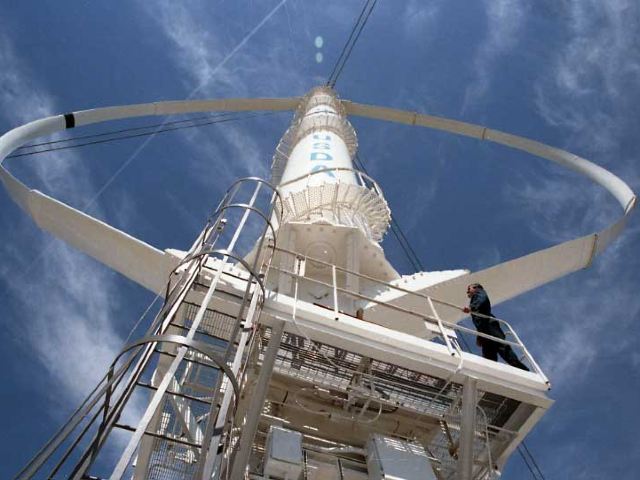
Researchers at the US Department of Energy’s Sandia National Laboratories created a tool that they plan to use to design a novel floating wind turbine that they said could help expand offshore deployments in deep water locations.
The turbine design places the generator closer to the water, instead of on the top of a tall tower. The approach makes the turbine less top-heavy and reduces the size and cost of the platform needed to keep it afloat. Sandia filed a patent application for the design in 2020.
A few tools exist that could do some but not all of the modeling that was required for the design and optimisation tasks. The Sandia-developed design tool can simulate the wind, waves, blade elasticity, platform motion and controllers.
Much of the US’s offshore wind blows across water more than 200 feet deep. At those depths, it would be costly to build the kind of rigid support structures typically used by wind turbines.
However, wind turbines that can float above the sea floor could play an important role, the researchers said. Key goals are to remove mass and cost from the system while also maximising energy capture. The result is a towerless, vertical-axis design.
The design, called a Darrieus vertical-axis wind turbine, has a lower center of gravity and can weigh less than a traditional wind turbine. One drawback is that it can be difficult to protect the turbine from extreme winds.

The Sandia design uses taut guy wires to maximize energy production.
For traditional, horizontal-axis wind turbines, the blades can rotate away from intense, damaging winds. But the Darrieus design catches the wind from every direction. To address this drawback, the Sandia design replaced the central vertical tower with taut guy wires. The wires can be shortened or lengthened to adjust for changing wind conditions to maximise energy capture while controlling strain. Replacing the shaft with wires also reduced the turbine weight, allowing the floating platform to be smaller and potentially less expensive.
The Sandia team is validating the design tool for use in certifying vertical-axis wind turbine designs. They said a trusted design tool means that certification bodies may be more willing to approve vertical-axis wind turbine designs, a necessary step for financing and deployment.
The researchers said the design tool can be used to model and optimise any vertical-axis wind turbine, whether it has a traditional tower or taut guy wires. The team is designing the entire system, the turbine and platform and their control, concurrently to reduce the levelized cost of energy.
The team said they hope to have an optimized floating, vertical-axis wind turbine system design by the end of 2022.
Development of the offshore wind turbine design software and future work optimising the system design is supported by the DOE’s Advanced Research Project Agency-Energy’s ATLANTIS program. The Sandia team is working with project partners FPS Engineering & Technology and the American Bureau of Shipping on the project.